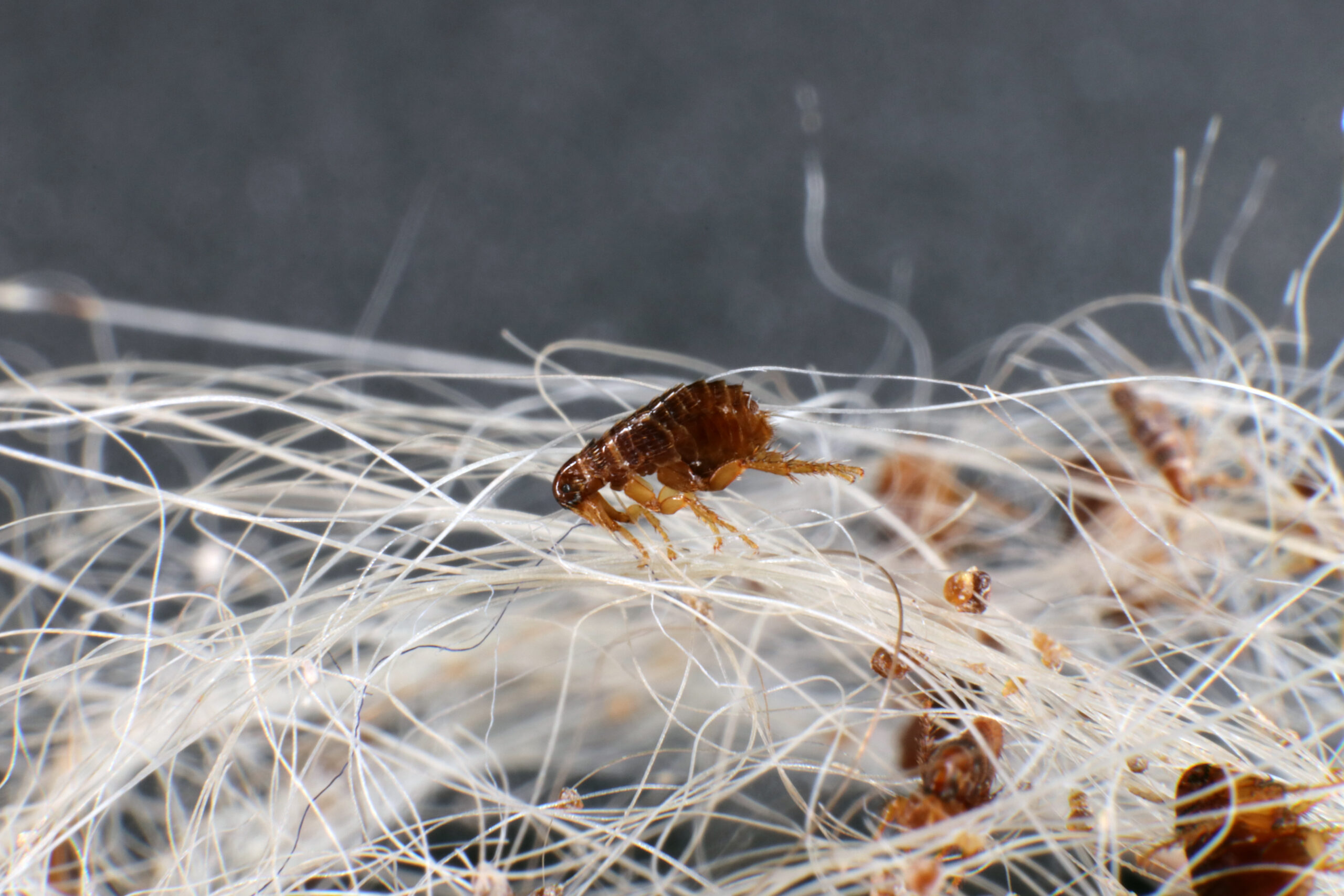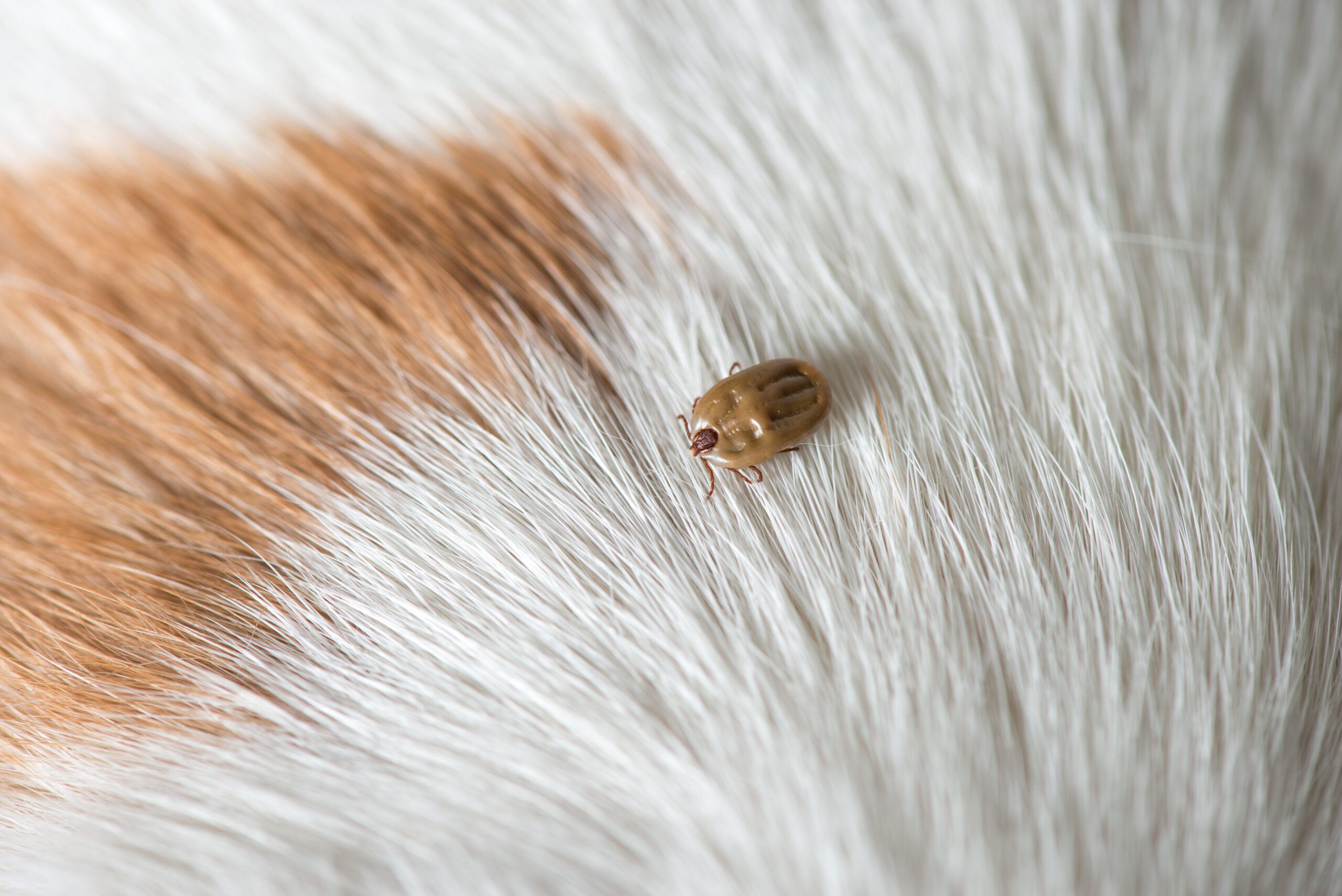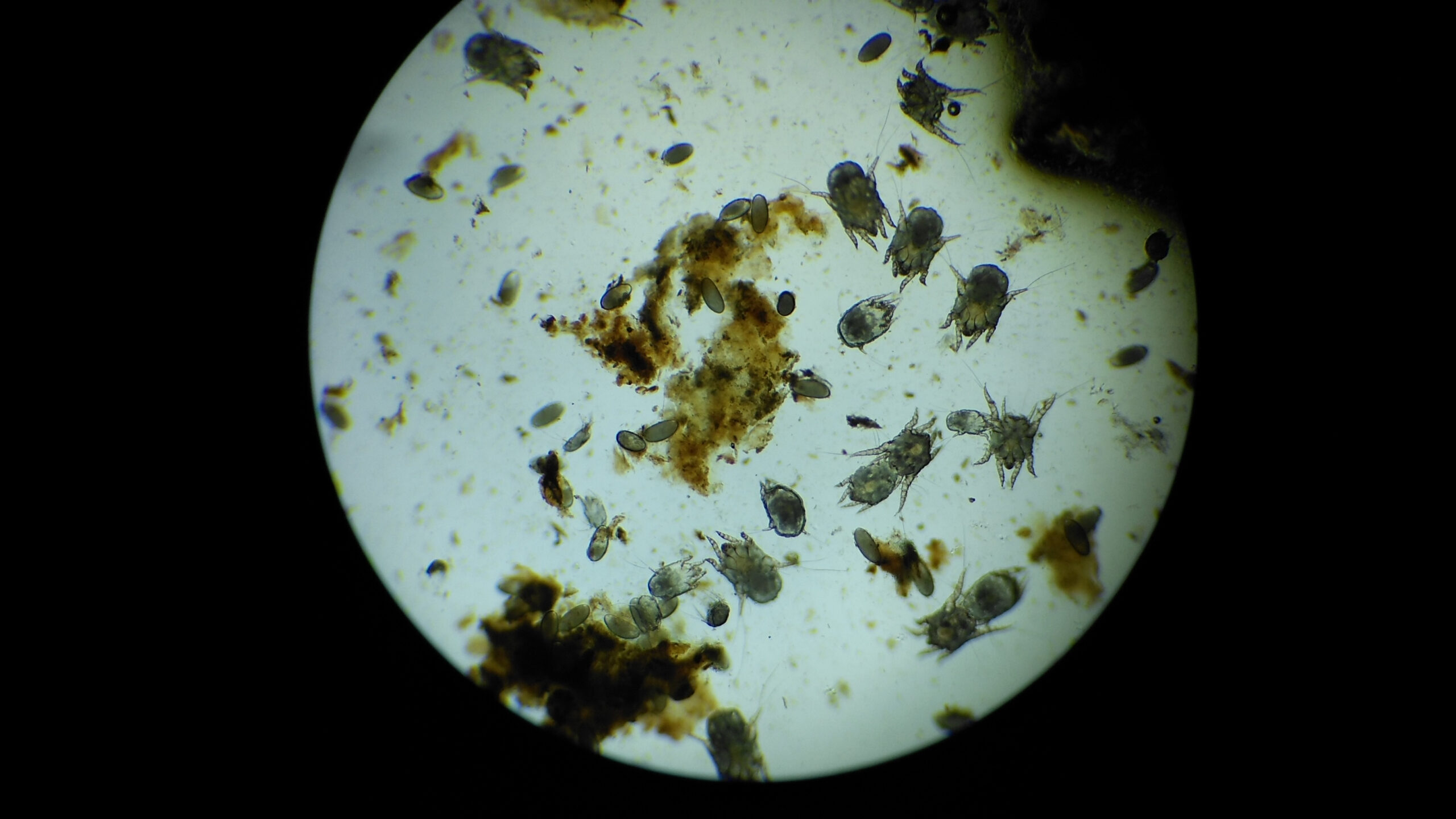4 Pests Commonly Found on Dogs
4 Pests Commonly Found on Dogs
This Saturday, August 26, is National Dog Day! Dogs are such a wonderful pet to have because of their immense loyalty and genuine love for their families. Their playfulness and cheerful disposition are just bonuses of having a dog in your home. Unfortunately, dogs are also furry mammals that love spending time outside and exploring their surroundings. This is an obvious fact (at least, we assume it’s obvious), but this exact description is the ideal target of some of the most notorious pests in the country. If you own a dog or two, you likely know how important it is to be vigilant against any bloodsucking or biting pests that can attack your furry friend. If you know the basic facts about these pests and the symptoms they can cause for your dog, you will be better prepared to handle any pest problem that plagues your pet. As a general guideline, any new symptoms or odd behaviors from your dog should be immediately assessed by your vet, since they know your pet’s medical history and can determine if one of these pests is behind it all. With this in mind, let’s take a look at 4 of the most common pests found either on or in dogs and how they impact your pet’s health.
Fleas

Signs: excessive scratching and nibbling on skin, irritated skin, fur loss, flea dirt (flea droppings) on skin and fur
Possibly the most common dog pest in the country, fleas are an absolute nuisance for both you and your dog. These flat insects are only 1/8 of an inch long and are reddish-brown or black in color. They can be easily seen on light-colored dogs, and are visible on darker dogs upon a closer look. Fleas like to stay on the same host as long as possible, but they are not afraid to switch things up if the current host lives with other mammals. They don’t have wings, so fleas can only get onto a host by crawling or jumping. Since they can jump up to two feet high, fleas will have no problem getting onto a dog and crawling to a hidden area of the animal. They like to hide in spots with folds or creases, such as around the neck, between the toes, and under the tail. Although homes with at least one pet are more likely to get fleas, these pests are not exclusive to households with multiple furry animals.
Since fleas can efficiently hide and prefer to stay in the darkness, they can easily evade detection as they continue to build their numbers. Female fleas can lay about 40 eggs per blood meal, so a flea infestation will get out of hand if it is not immediately treated. They find their next host in similar ways to mosquitoes, as both bloodsuckers can detect carbon dioxide output and body heat. Even though fleas can survive on humans and other mammals, they prefer furry animals — like dogs and cats — because these animals are a one-stop shop for fleas. They have both a reliable food source and an egg-laying site on the same animal, so they will never have to leave this host as long as they live. Some fleas are even named for the animal that they prefer above any other. Dog fleas are one such species, and they clearly have a taste for canines. They cannot survive on cats (which is quite ironic), so dog fleas live on any other mammal. Any dog with fleas will generally scratch a lot more, but some dogs are even allergic to flea saliva and will therefore experience some heightened symptoms.
Ticks

Signs: fever, lethargy, stiff joints, loss of appetite, lightened gums
Similar to fleas, ticks are a bloodsucking pest that can cause problems beyond just an itchy bite. These arachnids stick their mouthparts into the skin of their host and feed from them for a few days, then retreat to a hidden spot to digest the blood before seeking out their next host. Ticks can be found in urban areas and beaches, but their favorite habitats include tall grass, thick brush, and the forest. They are normally black or reddish-brown, then turn gray as they become engorged with their meal. While ticks are generally dormant in winter, they can still be major problems for people and dogs alike — especially when either one spends more time outside. Every dog has the potential to pick up a tick at some point, but the dogs that spend most of their time in the backyard are more at risk due to their proximity to the natural habitat of ticks.
Whether your furry friend spends more of their time inside or outside, it is a good idea to check them for ticks every so often. These pests like to hide under the collar, around the ears, under and behind the legs, around the tail, and between the toes. Essentially, any area with creases and folds is the favorite of ticks due to the vast hiding possibilities. The worst part of ticks is, surprisingly, not the fact that they consume warm blood to survive. It’s that ticks are some of the most disease-ridden pests found on dogs. These bloodsuckers can transmit diseases from their bodies to their host, and some of the most common include Lyme disease, Rocky Mountain spotted fever, and anaplasmosis. In fact, ticks can infect a host with Lyme disease after less than 24 hours of feeding. Lyme disease can go straight to a dog’s kidneys if it is left untreated, which will eventually be fatal. No matter which part of the country you live in, checking your dog (and yourself) for ticks is an essential part of enjoying the great outdoors.
Mites

Signs: hair loss, skin irritation, itching, skin infection, a lot of head-shaking
Mites are one of the most annoying pests to treat, largely because we can’t see them! They are microscopic and most species cannot be seen with the naked eye. However, their lasting effects are quite evident indeed. Mites are external parasites that can cause a myriad of skin irritations and infections in dogs. Many mites live within the skin and create dermatological issues for their canine host, who cannot scratch them away no matter how hard they try. A dog’s immune system is typically strong enough to control small amounts of mites, but a full infestation will be too much for it to handle.
Mites are tiny enough that they can live inside or outside of a dog and not be visually detected either way. They are often discovered under the skin, in hair follicles, and in oil glands. Every species of mite causes some kind of skin issue for the dog that is unfortunate enough to house these pests, but some mites have very specific causes and effects. There are three main mites that favor dogs as their hosts for various reasons. One is sarcoptes mites, which are contagious between dogs and can even go into humans. They can cause sarcoptic mange if they are left alone for long enough. A second dog mite is the Demodex mite, and it can cause a skin disease called demodectic mange if there are a lot of mites in one dog. The third mite common to dogs is the ear mite, predictably found in the ear canal and under the skin of the ear. They cause ear irritation and are often found when the dog won’t stop scratching at its ear at all hours of the day. The key to eliminating mites is to pay attention to your dog and take it to the vet as soon as you notice it scratching more than usual.
Heartworms

Signs: cough, fatigue, swollen belly, loss of appetite, weight loss, labored breathing
If you own a dog, you are almost guaranteed to be very familiar with the dangers of heartworms. Every vet warns against these pests and will likely prescribe a preventative heartworm medication during your dog’s first visit to the office. Every dog should have heartworm prevention regardless of its species, as these pests target every single kind of canine. Heartworms can be 3 to 14 inches long and look like long strands of pasta (our apologies for ruining your lunch). They are transmitted through mosquito bites when a mosquito bites an infected dog before feeding on a non-infected dog. The heartworm larvae are injected into the dog through the mosquito bite, then travel through the tissue towards the heart.
These internal parasites take about 6 months to mature, which they do on their path to the heart. As adults, heartworms live in the heart and lungs of the dog. They wrap around the heart for stability, which predictably creates all kinds of health issues in the dog. Early detection is absolutely essential with these pests. The sooner that you get your infected dog to the vet, the quicker the vet can administer medicine and the more likely your dog will make a full recovery. Conversely, the effects of heartworms will only get worse with time if they are left untreated. A dog with a larger heartworm infection is far more likely to experience evident symptoms than a dog with a couple of these parasites. Heartworm prevention and detection is absolutely necessary for every dog, so talk to your vet about your options if you do not already have a system in place.
Pointe Cares About Your Furry Friends
At Pointe Pest Control, we know that your pets are members of the family. That is why our team of highly-trained technicians is dedicated to protecting your home and every member of your family from frustrating pests. We are experienced in solving all kinds of pest problems, from wood-borers to bloodsuckers to food-contaminators. We begin every service with a complete inspection of the home and property, where our team searches for all signs of pest activity, entry points, and nesting areas. Then, we use our findings to create a treatment plan customized to solve the specific pest problems at hand. Not to worry: all of our products are completely safe for both people and pets! You can rest easy while our experienced technicians and efficient treatments do the hard work of eliminating every pest on your property. Contact us to learn more about our thorough pest control services and how our team will keep your family — both humans and animals — safe from even the most invasive of pests.
Citations
Bugs that affect your pets and how to keep them away. (n.d.). Terminix. Retrieved August 14, 2023, from https://www.terminix.com/blog/home-garden/pests-attracted-to-your-pets/
Dog mites — symptoms, prevention, & treatment. (n.d.). NexGuard. Retrieved August 14, 2023, from https://nexgard.com.au/parasites/mites/mites-on-dogs
Heartworm in dogs. (n.d.). American Heartworm Society. Retrieved August 14, 2023, from https://www.heartwormsociety.org/heartworms-in-dogs
LaRock, A. (n.d.) What are these little black bugs on my dog?. Emergency Vets USA. Available at https://emergencyvetsusa.com/little-black-bugs-on-my-dog/ (Accessed on August 14, 2023).
Managing fleas and ticks for dogs and cats. (n.d.). Raid. Retrieved August 14, 2023, from https://www.raid.com/en-US/education/bug-basics/managing-fleas-and-ticks-for-dogs-and-cats
PetMD Editorial. (2014, December 4). 5 dangerous bugs no dog owner wants brought indoors. PetMD. Available at https://www.petmd.com/dog/slideshows/parasites/dangerous-bugs-no-dog-owner-wants-brought-indoors (Accessed on August 14, 2023).
Stregowski, J. (2022, March 8). Common parasites found on and inside dogs. The Spruce Pets. Available at https://www.thesprucepets.com/common-dog-parasites-1117427 (Accessed on August 14, 2023).
Request a Free Quote Today
(We do not share your data with anybody, and only use it for its intended purpose)


